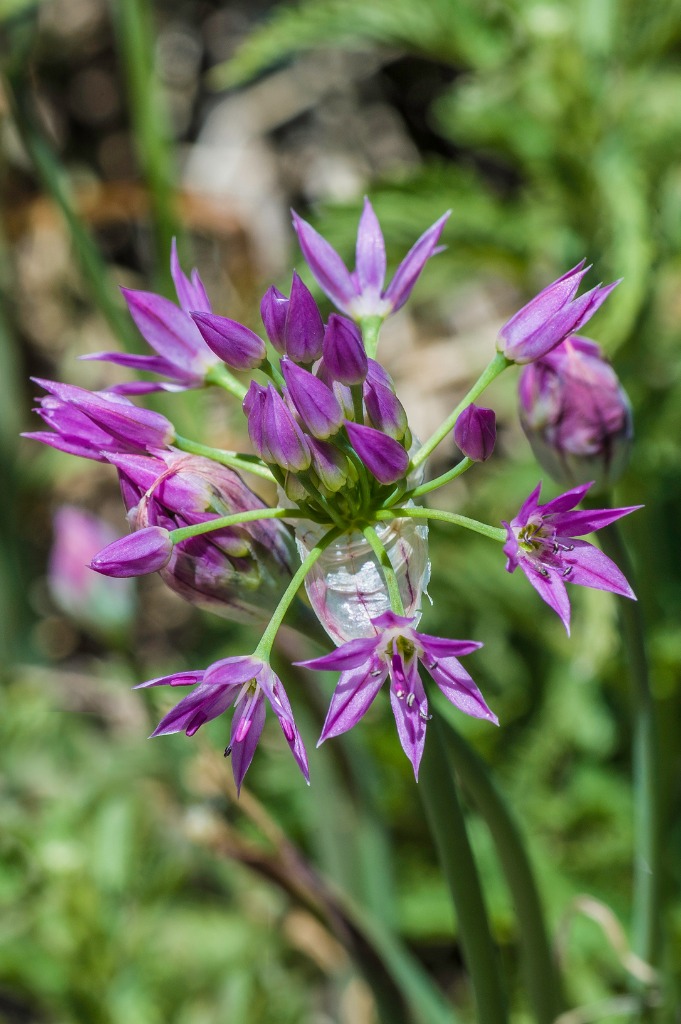Twincrest onion
(Allium bisceptrum)

Description
Allium bisceptrum, also known as the twincrest onion or aspen onion, is a high elevation plant native to western United States. It is a perennial that thrives under damp and shady conditions or open meadows in California, Arizona, New Mexico, Nevada, Oregon, Washington, Idaho, and Utah. Allium bisceptrum is used sometimes as food flavoring as their leaves may be very strong and odorous. Natives pray before picking the leaves of this plant. Many animals in the region, including elk, black bears and prairie dogs, eat the bulbs of the wild onions. The twincrest onion is a perennial at altitudes ranging from 2000 to 2900 meters. It grows to between ten and forty cm high. The onion bulbs are round and egg-shaped. The bulbs have a light tint and when cut, have a powerful odor. The flower heads are about 10–15 mm in length. The flowers are varying shades of purple or pink. Each flower head contains six sharply pointed tepals and often a darker stripe. Their long, flat leaves usually come in pairs of two, stay green longer than for most other onions, and give off an odor when scratched. Allium bisceptrum is found in mixed pine forests or in wetland-riparian habitats in California. It thrives near streambanks, in aspen groves, or in meadows. In California, A. bisceptrum is distributed throughout the counties of Alpine, El Dorado, Glenn, Inyo, Lassen, Mendocino, Mono, Modoc, Mariposa, Nevada, Plumas, San Bernardino, San Diego, Shasta, Sierra, Trinity, Tulare, and Tuolumne. It is also widely distributed in Nevada, Utah, Arizona, southeastern Oregon, and southern Idaho with isolated populations reported from northern Idaho and from southeastern Washington (Franklin County). Twincrest onions grow at high elevations and thrive in the cold. Their seeds can be planted outdoors in the early fall. They do not need to be warmed throughout the winter. In fact, in warmer winters, the plants may need to be kept at lower temperatures to insure growth and germination. Soil must not be drowned with water. It must be kept relatively drained. Their seeds should be planted in a nice and dense model with around four to five seeds per square foot of soil. Watering early on is not necessary unless extremely dry. Rain water should be enough to keep the plant alive until germination in the spring. When spring time arrives, two inches of water a week should be administered. If watered correctly, wild onions will begin to grow.
Taxonomic tree:







